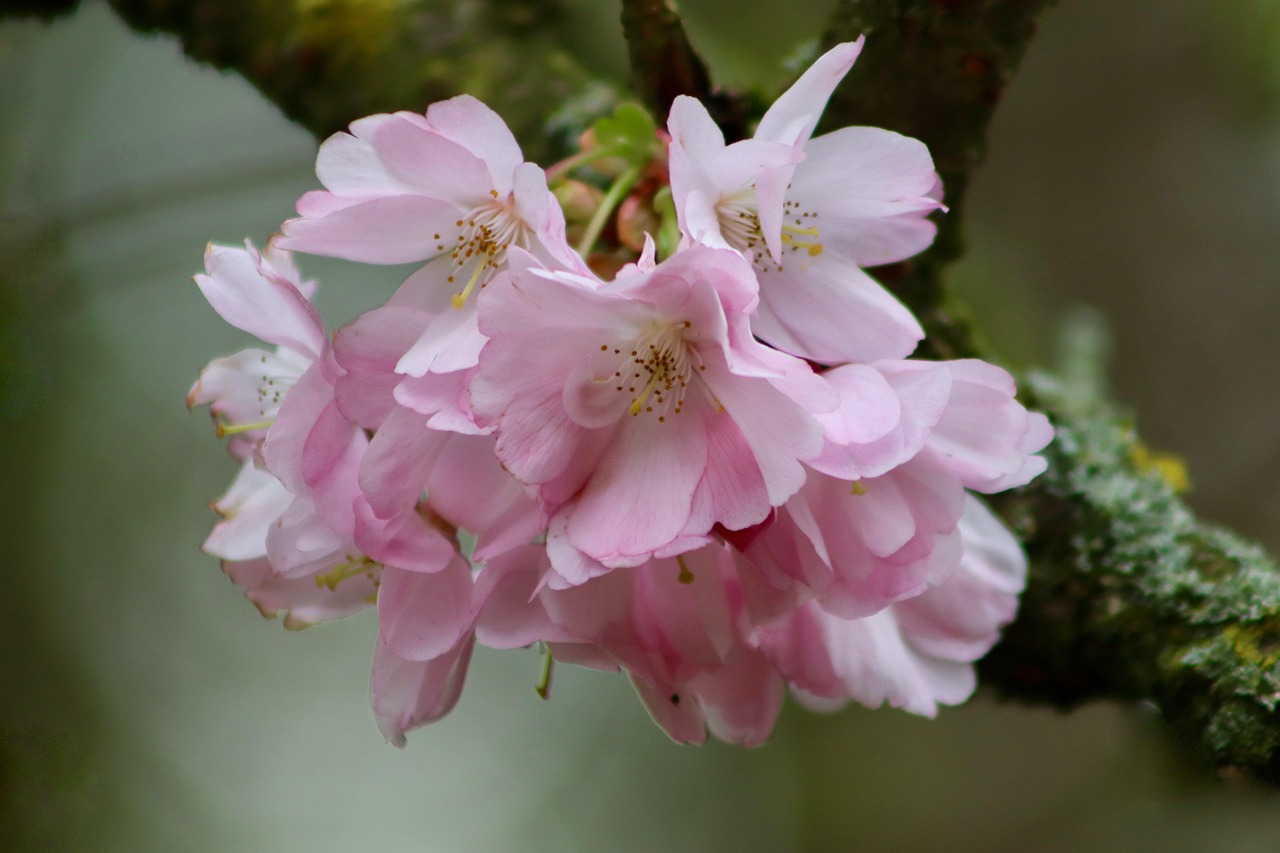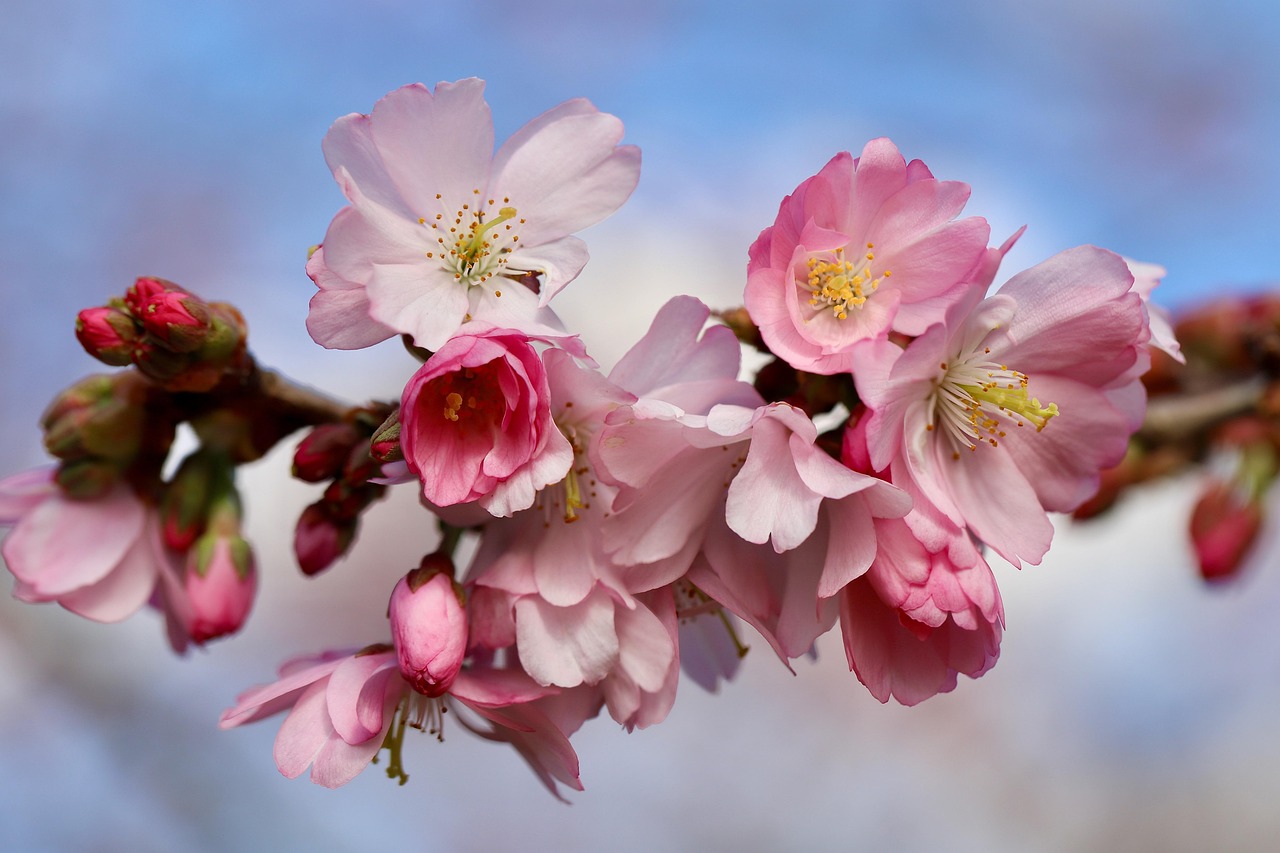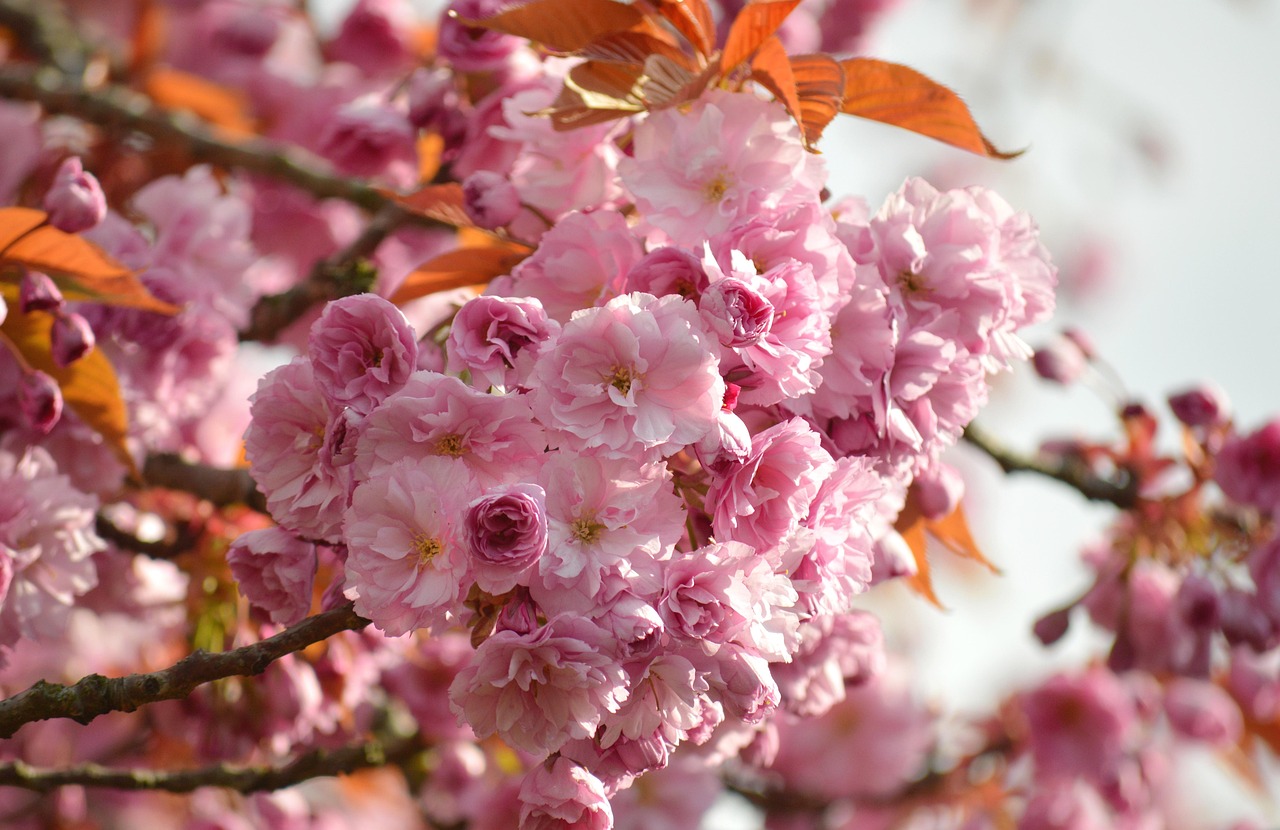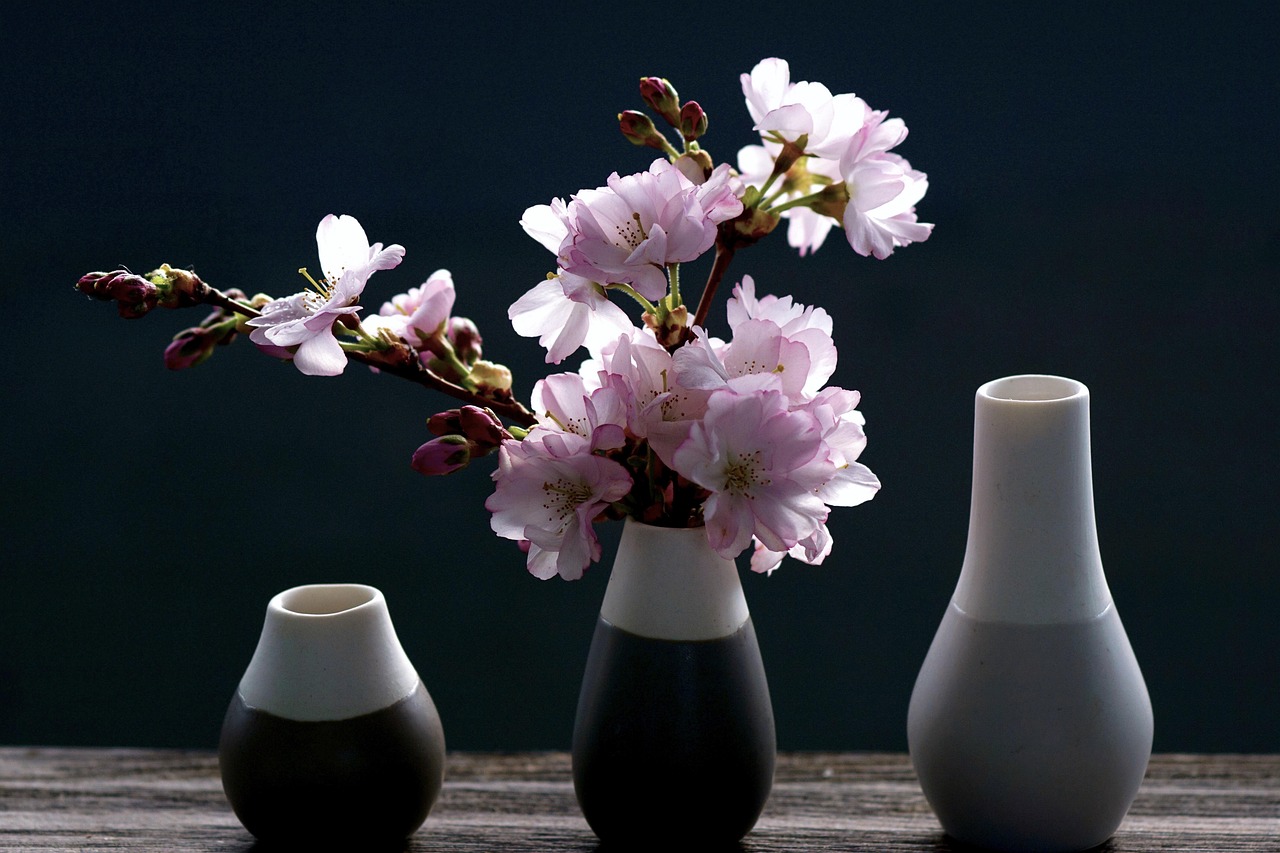Pruning Japanese cherry blossoms is essential for maintaining their health and beauty, especially before annual festivals. Proper pruning encourages flowering, removes dead or diseased wood, and shapes the tree to enhance its aesthetic appeal during the blooming season.
Japanese cherry blossoms, known as sakura, are iconic symbols of spring in Japan and many other parts of the world. These trees are celebrated for their stunning blooms, which create breathtaking landscapes during the cherry blossom season. Festivals dedicated to these blossoms attract thousands of visitors who come to view the delicate pink flowers. To ensure that these trees remain healthy and vibrant, proper pruning is necessary.

Pruning not only promotes better growth but also enhances the overall appearance of the tree. This practice involves removing specific branches to improve air circulation, sunlight penetration, and flower production. Understanding the right time and technique for pruning is crucial to achieving the desired results.
Understanding Cherry Blossom Varieties
There are several varieties of Japanese cherry blossoms, each with unique characteristics and blooming patterns. Knowing the specific type you are dealing with can greatly influence your pruning approach. Here are some popular varieties:
| Cherry Blossom Variety | Description | Blooming Time |
|---|---|---|
| Yoshino | Light pink flowers that bloom in clusters. | Early spring (March to April) |
| Kwanzan | Double pink flowers that are larger and more vibrant. | Mid-spring (April to May) |
| Weeping Cherry (Shidarezakura) | Graceful branches with drooping flowers that create a cascading effect. | Early to mid-spring (March to April) |
Each variety has specific growth patterns and requirements. Therefore, it is essential to research the particular type of cherry blossom tree you are working with to tailor your pruning techniques effectively.

When to Prune Cherry Blossoms
The timing of pruning is critical for the health of cherry blossom trees and their flowering potential. The best time to prune is typically in late winter or early spring, just before new growth begins. This timeframe allows you to see the tree’s structure clearly while minimizing stress on the plant.
Pruning too late in the season can remove potential flower buds, impacting the tree’s blooming display. Conversely, pruning too early can expose fresh cuts to harsh winter weather, which can lead to damage or disease. Therefore, proper timing ensures that the trees can thrive and produce their beautiful blossoms during the festival season.
Essential Pruning Techniques
Effective pruning involves several techniques that focus on different aspects of tree health and aesthetics. Here are some key methods:

- Thinning: Remove selected branches to improve air circulation and sunlight exposure.
- Heading: Cut back longer branches to encourage bushier growth and more flowering sites.
- Cleaning: Remove dead, damaged, or diseased wood to prevent pest infestations and diseases.
- Shaping: Maintain a balanced shape by selectively pruning to enhance visual appeal.
When employing these techniques, it is essential to use sharp, clean tools to make precise cuts. This reduces damage to the tree and minimizes the risk of disease transmission. Additionally, always wear safety gear when handling pruning tools.
The Importance of Aftercare
After pruning, providing proper care for your cherry blossom trees is crucial for their recovery and health. Watering deeply after pruning can help the tree recover from any stress caused by cutting. It is also important to monitor for any signs of pests or diseases that may take advantage of weakened areas.
A layer of mulch around the base can help retain moisture and suppress weeds. Regular inspections throughout the growing season will allow you to address any issues promptly, ensuring that your cherry blossoms thrive and bloom beautifully for the festivals ahead.

By understanding the right practices for pruning Japanese cherry blossoms, you can contribute to the beauty and longevity of these iconic trees while enhancing their display during annual celebrations.
Common Pests and Diseases Affecting Cherry Blossoms
To ensure the health of cherry blossom trees, it is essential to be aware of common pests and diseases that can threaten their vitality. Understanding these threats allows for timely intervention and effective management. Below are some of the most common issues that may arise:
- Aphids: These small insects suck the sap from leaves and stems, leading to wilting and deformity.
- Spider Mites: These pests thrive in hot, dry conditions and can create webbing on branches, causing leaf drop.
- Cherry Leaf Spot: This fungal disease results in dark spots on leaves, which can eventually cause leaf drop.
- Powdery Mildew: A fungal infection that appears as a white powdery coating on leaves, which can inhibit growth.
Monitoring your cherry blossom trees regularly can help identify these pests or diseases early. If detected, prompt action is necessary to prevent further damage.
Identifying Signs of Infestation
Recognizing the signs of pest infestation or disease is crucial for effective management. Here are some symptoms to look for:
- Brittle or yellowing leaves.
- Stunted growth or branches that appear weak.
- Visible webs or clusters of small insects on the foliage.
- Discoloration or spots on leaves or bark.
If you notice any of these signs, it is advisable to take immediate action to treat the affected areas. Early intervention often leads to better outcomes for the health of your cherry blossom trees.
Preventative Measures for Healthy Trees
Preventing pests and diseases is often easier than managing them after they become established. Implementing a few simple measures can significantly reduce the likelihood of infestations:
- Regular Inspections: Conduct thorough checks on your trees at least once a week during the growing season.
- Proper Watering: Ensure that trees receive adequate water, especially during dry spells, to maintain their overall health.
- Good Air Circulation: Prune appropriately to ensure branches are not overcrowded, allowing for better airflow.
- Healthy Soil: Use quality soil and consider organic fertilizers to promote strong root systems and healthy growth.
By following these preventative measures, you can help your cherry blossom trees withstand potential threats while enhancing their overall vitality.
Fertilization Techniques for Optimal Growth
Fertilization plays a critical role in promoting healthy growth and vibrant blooms in cherry blossom trees. Proper nutrients support the tree’s development and encourage abundant flowering. Here are some essential tips for fertilizing cherry blossoms effectively:
Choosing the Right Fertilizer
Selecting an appropriate fertilizer is crucial for the health of your cherry blossoms. Consider using:
- Balanced Fertilizers: Look for fertilizers with equal ratios of nitrogen (N), phosphorus (P), and potassium (K), such as 10-10-10 formulations.
- Slow-Release Formulas: These provide a steady supply of nutrients over an extended period, reducing the risk of over-fertilization.
Application Timing
The timing of fertilizer application is essential for effectiveness. Generally, fertilize cherry blossoms in early spring, just as new growth begins. This timing supports healthy development and enhances flowering potential. Avoid fertilizing in late summer or fall, as this can stimulate new growth that may not survive the winter.
Watering Practices for Healthy Cherry Blossoms
Watering is another critical component of cherry blossom care. Proper watering practices help maintain soil moisture, promote root development, and support overall tree health. Here are some effective watering techniques:
- Deep Watering: Water deeply rather than frequently. This encourages roots to grow deeper into the soil, making them more resilient.
- Avoid Over-Watering: Ensure proper drainage in the soil to prevent root rot and other moisture-related issues.
- Mulching: Apply a layer of mulch around the base of the tree to retain moisture and regulate soil temperature.
By utilizing these watering techniques, you can create a supportive environment for your cherry blossom trees, helping them thrive throughout their growing season.
The Role of Seasonal Care
Caring for cherry blossom trees extends beyond pruning and watering. Seasonal care is essential for maintaining their health throughout the year. Each season presents unique challenges and opportunities for tree care:
Spring Care
During spring, focus on monitoring blooms, applying fertilizers, and checking for pests as new growth begins. This is also an ideal time to prune as needed.
Summer Care
In summer, ensure adequate watering during dry spells and monitor for signs of heat stress or pests. Regular checks will help maintain tree health.
Autumn Care
As temperatures cool down, prepare your trees for winter by reducing watering gradually and applying mulch to protect roots from freezing temperatures.
winter Care
In winter, protect young trees from heavy snow or ice accumulation. Cover delicate branches if necessary to prevent breakage from extreme weather conditions.
This seasonal approach ensures that your cherry blossom trees remain healthy and vibrant throughout the year, allowing them to put on their stunning display during annual festivals.
Creating the Ideal Environment for Cherry Blossoms
To ensure that cherry blossom trees thrive and produce stunning blooms, it is essential to create an optimal growing environment. Several factors contribute to the overall health and vitality of these trees, including soil quality, sunlight exposure, and location.
Soil Requirements
Cherry blossoms prefer well-draining soil that is rich in organic matter. The ideal soil composition supports healthy root development and provides essential nutrients. Here are some key points to consider when preparing the soil:
- pH Level: Aim for a soil pH between 6.0 and 7.0. This range is optimal for nutrient uptake.
- Organic Matter: Incorporate compost or well-rotted manure to enhance soil fertility and improve structure.
- Drainage: Ensure proper drainage to prevent waterlogging, which can lead to root rot.
Testing the soil before planting or fertilizing can provide valuable insights into its composition and nutrient levels. This information can guide your amendments and help you create the best possible environment for your cherry blossoms.
Sunlight Exposure
Cherry blossom trees thrive in full sunlight, requiring at least six hours of direct sun each day. Proper sunlight exposure promotes vigorous growth and abundant flowering. When selecting a planting location, consider the following:
- Avoid Shaded Areas: Planting in shaded spots can hinder blooming and overall tree health.
- Consider Surroundings: Ensure nearby structures or trees do not block sunlight during critical growth periods.
- Reflective Surfaces: If possible, consider planting near reflective surfaces, such as light-colored walls, that can enhance sunlight exposure.
Mulching Techniques for Cherry Blossom Trees
Applying mulch around cherry blossom trees serves multiple purposes, including moisture retention, weed suppression, and temperature regulation. The right mulching techniques can significantly benefit your trees throughout their growth cycle.
Choosing the Right Mulch
Selecting appropriate mulch materials is essential for maximizing benefits. Here are some effective options:
- Organic Mulch: Materials like shredded bark, wood chips, or straw decompose over time, enriching the soil.
- Inorganic Mulch: Gravel or pebbles can provide a long-lasting option that helps with drainage and weed control.
Applying Mulch Correctly
To apply mulch effectively, follow these steps:
- Clear the Area: Remove weeds and debris from around the base of the tree.
- Apply a Layer: Spread a 2-4 inch layer of mulch around the tree, keeping it a few inches away from the trunk to prevent rot.
- Monitor Thickness: Check the mulch layer regularly and replenish it as necessary to maintain thickness.
This approach ensures that your cherry blossom trees receive the moisture and nutrients they need while protecting them from competition with weeds.
Enhancing Aesthetic Appeal Through Planting Design
When planning for cherry blossom trees, consider their placement within your landscape design. Thoughtful planting can enhance both the beauty of your garden and the visibility of the blossoms during festivals.
Companion Planting
Companion planting involves selecting neighboring plants that complement cherry blossoms in terms of aesthetics and growth requirements. Here are some suitable companions:
- Daffodils: These bright flowers bloom alongside cherry blossoms, creating a cheerful spring display.
- Hostas: Their lush foliage provides a nice contrast to the delicate blossoms.
- Japanese Maple: The vibrant colors of maple leaves can enhance the visual appeal of cherry blossoms in any garden.
Spacing Considerations
Proper spacing is crucial for ensuring that cherry blossoms receive adequate sunlight and air circulation. When planting multiple trees, consider the following:
- Distance from Other Trees: Space cherry blossom trees at least 15-20 feet apart to prevent overcrowding.
- Avoid Overlapping Canopies: Ensure that tree canopies do not overlap as they mature, which can inhibit growth and flowering.
The Impact of Climate on Cherry Blossom Growth
The climate in which cherry blossom trees are planted significantly affects their growth patterns and flowering habits. Understanding how different climate conditions influence these trees can help you make informed decisions about care and maintenance.
Temperature Requirements
Cherry blossoms thrive in temperate climates with distinct seasons. They require a certain number of chilling hours (cold temperatures) during winter to blossom effectively in spring. Here are some temperature considerations:
- Chilling Hours: Most varieties need approximately 300-1,000 chilling hours below 45°F (7°C).
- Sensitivity to Frost: Late frosts can damage buds; therefore, planting in areas less prone to late frost is advisable.
Rainfall and Watering Needs
Adequate rainfall is essential for healthy cherry blossom trees. They generally require about one inch of water per week during the growing season. In areas with low rainfall, supplemental watering may be necessary. Consider these factors when planning watering schedules:
- Drought Conditions: During periods of drought, increase watering frequency to maintain tree health.
- Irrigation Systems: Consider installing irrigation systems to ensure consistent moisture levels.
By understanding how climate impacts cherry blossom growth, you can tailor your care practices to support healthy development and stunning blooms during annual festivals.
Advanced Pruning Techniques for Cherry Blossoms
Once you have mastered the basics of pruning cherry blossom trees, you may wish to explore advanced techniques that can further enhance the tree’s shape, health, and flowering potential. These methods require a deeper understanding of tree biology and growth patterns but can yield beautiful results.
Selective Pruning
Selective pruning involves carefully choosing which branches to remove based on their position and health. This technique enhances airflow and light penetration, which can lead to improved flowering. Here are some guidelines:
- Remove Crossing Branches: Identify branches that cross over each other and could cause damage or inhibit growth.
- Focus on Inner Branches: Thin out some of the inner branches to allow better light access to the tree’s center.
- Maintain Structure: Prune to maintain a balanced structure, ensuring that no single side of the tree becomes too dense.
Training Young Trees
Training young cherry blossom trees can set the foundation for a strong, healthy structure. Techniques such as staking and guiding branches can be beneficial:
- Staking: Use stakes to support young trees and encourage upright growth. This helps prevent bending or breaking in strong winds.
- Branch Guiding: Gently tie new branches to support structures to encourage desired growth angles.
This training process is crucial in the early years of a tree’s life and can significantly affect its long-term health and appearance.
Pest Management Strategies
Effective pest management is vital for maintaining the health of cherry blossom trees. Implementing both preventative measures and reactive strategies can help keep pests at bay:
Natural Predators
Encouraging natural predators in your garden can help control pest populations without chemicals. Here are some beneficial insects to attract:
- Ladies Beetles: These insects feed on aphids, helping to keep their populations in check.
- Lacewings: Known for their voracious appetite for aphids and other soft-bodied pests.
- Parasitic Wasps: These wasps lay eggs inside pest insects, which helps reduce their numbers.
Organic Pest Control Options
If pest populations become unmanageable, consider using organic control methods. Some effective options include:
- Neem Oil: A natural pesticide that disrupts the life cycle of various pests without harming beneficial insects.
- Insecticidal Soaps: These soaps suffocate soft-bodied insects and are safe for use on edible plants.
- Homemade Garlic Spray: A mixture of crushed garlic and water can deter many pests when sprayed on affected areas.
Preparing for Cherry Blossom Festivals
As you approach the annual cherry blossom festivals, special preparations can enhance the experience for visitors and ensure that your blossoms are at their best:
Event Planning
If hosting a festival or simply participating in local celebrations, consider the following tips:
- Timing Blooming: Monitor weather patterns to anticipate bloom times, ensuring your trees are at peak during festivals.
- Create Pathways: Establish clear pathways around the trees for visitors to enjoy without damaging the roots or surrounding plants.
- Educational Signage: Provide information about the cherry blossom species, care tips, and cultural significance to engage attendees.
Final Thoughts
Pruning Japanese cherry blossoms is a rewarding endeavor that enhances not only the health of the trees but also their beauty during annual festivals. By understanding the needs of these iconic trees, from soil requirements to advanced pruning techniques, you can create a stunning display that captivates audiences during the blooming season.
The journey of caring for cherry blossoms is an ongoing process involving seasonal maintenance, pest management, and proper watering practices. Implementing these strategies will ensure that your cherry blossoms flourish year after year, creating unforgettable memories during springtime celebrations.
With the right knowledge and dedication, you can cultivate a magnificent cherry blossom landscape that not only honors tradition but also brings joy to all who experience it. Whether you are a seasoned gardener or a newcomer to horticulture, embracing the art of pruning and caring for these beautiful trees can lead to spectacular results.
